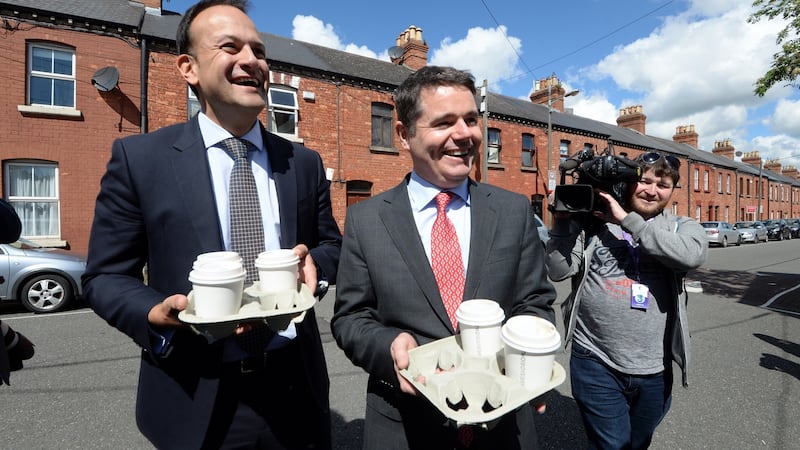The Sláintecare action plan published last week outlines what is to happen during the rest of 2019 to deliver reform of health services. It lays the foundations to make Sláintecare a reality despite its hesitancy about entitlements and the absence of detail on workforce expansion and a budget.
Sláintecare, the Oireachtas Report on the Future of Healthcare, published in May 2017, was an all-party political blueprint on the future direction of Irish healthcare. The vision of the 2017 report is a universal health system accessible to all on the basis of need, where everyone in Ireland will have an entitlement to access quality, timely, integrated care, at low or no charge, with much more care provided in the community. It set ambitious timelines and budgets required to deliver Sláintecare.
Little happened between May 2017 and last August, when the Sláintecare implementation strategy was published. The anodyne strategy, lacking timelines, ambition and a budget, was buried in silly season, published on the Wednesday after the bank holiday weekend. In September, Laura Magahy took up her post as executive director of the Sláintecare programme implementation office and Prof Tom Keane became chair of the Sláintecare advisory council.
We have another report on a report on a report, but still no proper budget
This action plan is the first tangible result of the work of the implementation office. Given that it is an action plan for 2019 and has been published just before the end of the year’s first quarter, there must have been difficulty getting it agreed. But that is not surprising. Neither the Government nor the Department of Health were too enamoured with the 2017 Sláintecare report, most evident in their slowness to act on it. That said, the action plan has now been published and it does get Sláintecare out of the traps, with the important rubber stamp of Government approval. The plan acknowledges 2019 is the first full year of Sláintecare’s implementation.
Budget
Social Democrats TD Róisín Shortall, who ably chaired the Oireachtas committee, is critical of the plan, saying: “We have another report on a report on a report, but still no proper budget.” This is true, yet a road map as broad and ambitious as Sláintecare needs granular detail, timelines and people on board to begin to realise such large scale reform. The plan contains enough of these to get it moving.
The plan is centred on a citizen-care master plan, whereby citizens and staff will be central to redesigning our health system as well as empowering us all to look after our own health. There are 10 components which will underpin this master plan, four overarching work streams and 20 specific work programmes for 2019 with key deliverables and timelines, too many to go into in detail here.

While some of the plan is a rehash of existing health strategies, it is necessary to weave these into the Sláintecare implementation process and it does this well.
The 2017 Oireachtas report contained a transition fund – €3 billion to make up for historic underspending in health and much-needed investment – and costed the entitlements expansion at €20 billion over a 10-year period. The plan specifies “it will prepare detailed budgets for a transition fund to support Sláintecare reform” but critically there is no quantum or specific timelines for this fund.
There is a strong emphasis on getting the right workforce in place, rightly so as they are the essence of delivering accessible, high-quality care
The plan is feebler on universalism than the 2017 Oireachtas report committing to develop “an approach to modeling [sic] various entitlement and eligibility scenarios and examine costs and benefits . . . We will plan how, when and in what order of priority this could be done and make proposals to government for consideration”. This could be interpreted as government-speak to do nothing. That said, it does specify that “everyone will have entitlement to a comprehensive range of primary, acute and social care services . . . providing universal services at no or low cost to the patient/service user”.
Workforce
There is a strong emphasis on getting the right workforce in place, rightly so as they are the essence of delivering accessible, high-quality care. But more staff are needed and this is notably absent in the action plan.
This hesitancy on a universal entitlement to care and failure to specify the workforce and budgetary expansion is not surprising given the institutional, political and economic context in which the plan was developed. However, it will not be possible to deliver Sláintecare without high-level political support and a budget to resource it. While Simon Harris realises we cannot afford not to reform through Sláintecare, it seems he has yet to gain the crucial support of Taoiseach Leo Varadkar and Minister for Finance Paschal Donohue.
Health systems are like aircraft carriers, enormous and incredibly complex, whose direction is notoriously hard to change. The 2017 Oireachtas Sláintecare report laid out a very different path for the Irish health system where much better care would be provided on the basis of need not ability to pay. The 2019 action plan, while far from perfect, manages to steer us further in the right direction, inching us towards higher-quality, accessible, universal healthcare.
Dr Sara Burke is a research fellow in the Centre for Health Policy and Management in Trinity College Dublin. She worked as part of an academic team providing technical support to the Oireachtas Committee on the Future of Healthcare







